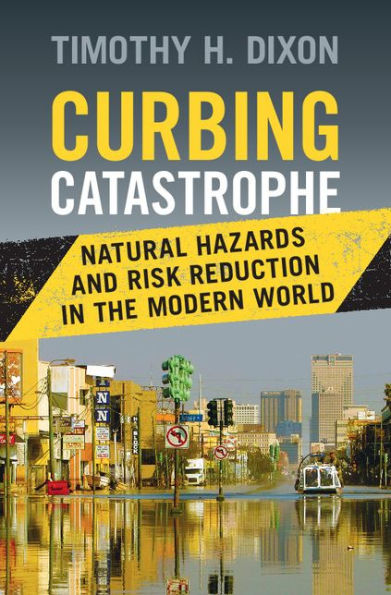'In Curbing Catastrophe, Timothy H. Dixon, a leading natural hazard scientist, gives a clear, calm, and thoughtful discussion of natural hazards facing societies around the world. The book nicely explains the science of hazards including earthquakes, tsunamis, coastal flooding, and other effects of global warming. It looks at specific cases, and generalizes them to make sensible suggestions of how to reduce the risk they pose to people and property. Dixon draws on his personal experiences and research results to make an easily readable and insightful book. Anyone interested in natural hazard science and policy will enjoy reading the book - and will gain new insights, even on topics with which they are familiar.' Seth Stein, President of the American Geophysical Union Natural Hazards Focus Group, William Deering Professor of Earth and Planetary Sciences and Institute for Policy Studies Associate, Northwestern University, Illinois
'Timothy H. Dixon provides a cogent and practical presentation of the risks we face with both natural and human-contributed disasters that kill, harm and cost us, especially if we do nothing. The takeaway message is: if you love this Earth and want to continue to rely on it, get to know it better and learn what we can do to protect ourselves from future calamities. Dixon explains in understandable fashion how the Earth works geologically; how, historically, we have taken the easy and convenient path to occupy it; and why we are so unprepared for its physical upheavals. Most significantly he provides solutions that make sense for now and for the future. The Earth will never stand still; should we not learn to work with it instead of against it? Our resistance to accommodating physical reality is our own self-destructing problem. Dixon helps us see this without shaming, and provides solutions that can help ourselves and our progeny.' John Hofmeister, Former President of Shell Oil Company and Founder and CEO of Citizens for Affordable Energy
'This book covers risk theory, the basics of natural disasters, uncertainty, and vulnerability of humans. Dixon looks specifically at Fukushima and the more general problem of untoward geological events and nuclear power plants, and other aspects of tsunamis … He makes the point, correctly, that for various reasons the increase in price of fossil fuels that would ultimately drive, through market forces, the development of non-fossil fuel sources of electricity and motion is not going to happen for a very long time on its own. Environmentalists who assume there will be a huge increase in fossil fuel costs any time now are almost certainly mistaken. … [the author] makes valid and important points about science communication, time lags and long-term thinking …' Greg Laden , Greg Laden's Blog, Science Blogs (www.scienceblogs.com)
'This book was written more for the general reader than the specialist. As such, it is a most useful book … [Dixon’s] practical experience supplements his scientific knowledge in demonstrating how better communication about pending threats could have greatly mitigated the dire consequences of natural disasters …[the] book proceeds methodically, structured as a primer, and with due scientific detachment. He is demonstrating, not lecturing. He begins by defining long-term risks and their real-world impacts (e.g., on markets), sets out the practical implications of the differences between natural and man-made disasters, underlines the role scientific uncertainty plays … Th[e] concluding chapter is packed with practical solutions (helpfully summarized on pages 268-69), aimed at demonstrating to the recalcitrant how it would be to their interests in the here-and-now to heed expert advice … As an examination of our own problems at home and their solutions through better communication, this book is the model.' G. T. Dempsey, GeoLounge (www.geolounge.com)
'Dixon covers a wide range of natural (and a few man-made) hazards with recent examples of major disasters as the vehicle to provide context and consequences. The examples are carefully chosen to allow Dixon to explore how societal behaviour did or can make the hazards catastrophic … I see this book serving several important roles. First … it is a recommended read for most geoscientists, and others who have an interest in how the Earth works on human timescales. Second … as a thought provoking read for graduate students, helping them develop a good understanding of the broader impacts of their science. The combination of rigorous science, intriguing perspective, and societal relevance make Curbing Catastrophe a valued addition to the literature of natural hazards.' Kevin P. Furlong, International Geology Review



